Shoulder Dislocations and Instability
What is Shoulder Instability?
Instability is term that means that the shoulder can come out of joint, or “dislocate.” Sometimes this problem occurs without an injury, but in most cases it occurs after an accident where the shoulder “pops out.” If the shoulder “pops out” once, it may continue to do so during sports or certain shoulder movements, or even during sleep.
The shoulder is a ball and socket joint, similar to a golf ball on a tee. A rim of tissue called “the labrum” surrounds the socket like a bumper on a pool table. The labrum helps keep the ball in its proper location on the socket. When a shoulder dislocates, the labrum tissue is stretched or torn and cannot properly hold the ball in the socket.
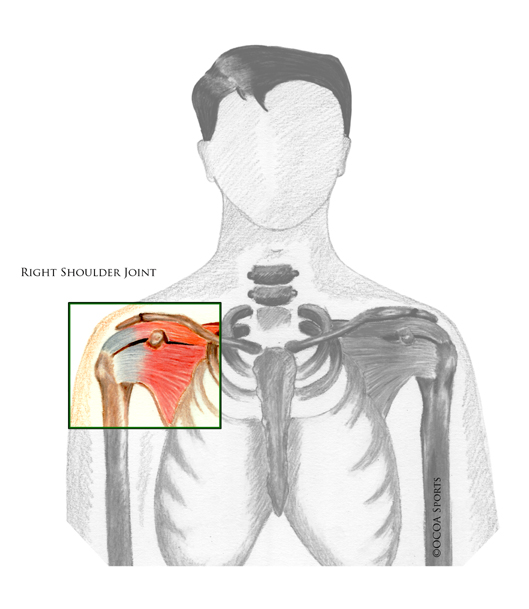
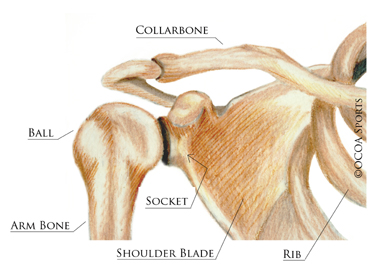
The shoulder is a ball and socket joint
Patients who dislocate their shoulder usually require help putting it back in place, often in the Emergency Room. After their initial injury, often they feel that the shoulder could dislocate again in certain positions, like while throwing a ball, putting on a seatbelt, or even while sleeping.
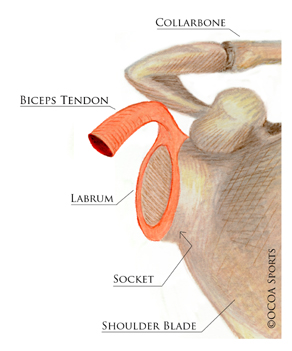
The labrum tissue surrounds the socket
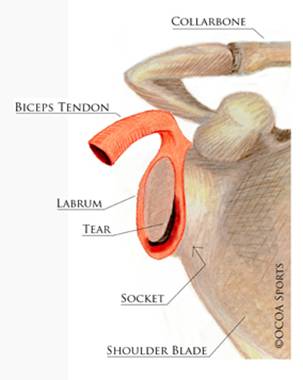
The labrum tears when the shoulder pops out
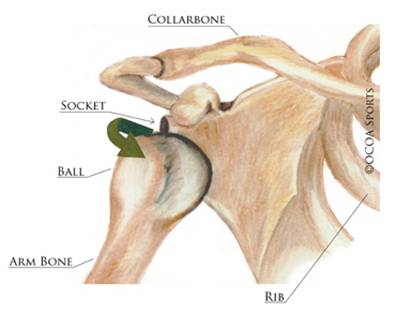
Dislocated shoulder
To evaluate for shoulder instability, a doctor will perform an examination after a history is taken. X-rays are performed to image the shoulder. In patients with shoulder instability, the X-rays may show some telltale signs of dislocation. To further evaluate the shoulder, an MRI may be ordered. The MRI will show muscles, tendons, and ligaments around the shoulder that are not visible on the x-ray.
Shoulder Dislocation Treatment.
In order to prevent repeat episodes of instability, or “popping out,” surgery may be required, however therapy is sometimes attempted prior to recommending surgery. The torn or stretched labrum may not heal properly without surgery. During surgery, the surgeon stitches the damaged labrum tissue back onto its proper location on the socket. This restores the normal function of the labrum to keep the ball in the socket. This procedure is called “shoulder stabilization.”
Shoulder Dislocation Surgery.
If surgery is recommended it may be performed arthroscopically. Arthroscopic surgery uses small incisions and small tools, about the size of a pencil, to perform the procedure. All the work is visualized with a small camera, the arthroscope. The surgeon sees inside the shoulder with the arthroscope and its images are projected on a video screen.
In order to fix the torn labrum tissue, stitches are placed into the torn tissue to sew it back to its proper location on the bone. Anchors that are drilled into the bone are used to hold the stitches in the bone and the torn tissue. The anchors are made of metal or absorbable plastic. Metal anchors are permanent and do not need to be removed. Absorbable anchors are metabolized by the body over several years.
During surgery, patients are asleep and do not remember the procedure. Depending on the severity of the tear, the procedure can take 1.5 to 4 hours.
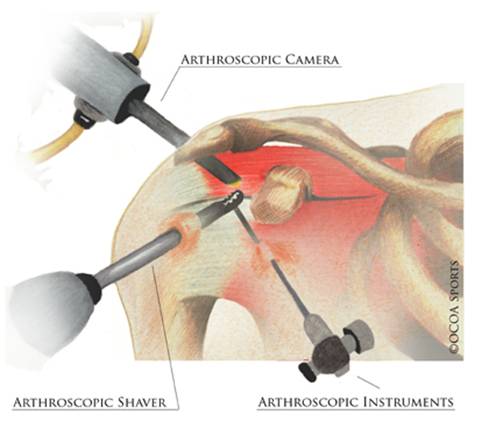
Arthroscopic camera and tools in the shoulder
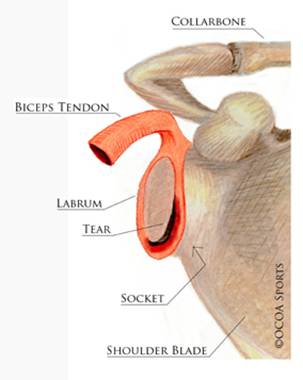
Torn labrum tissue before repair
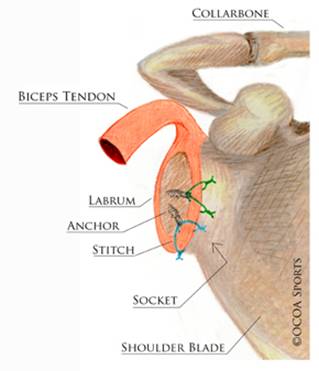
Anchors and stitches are placed to re-attach the torn labrum tissue to its proper location
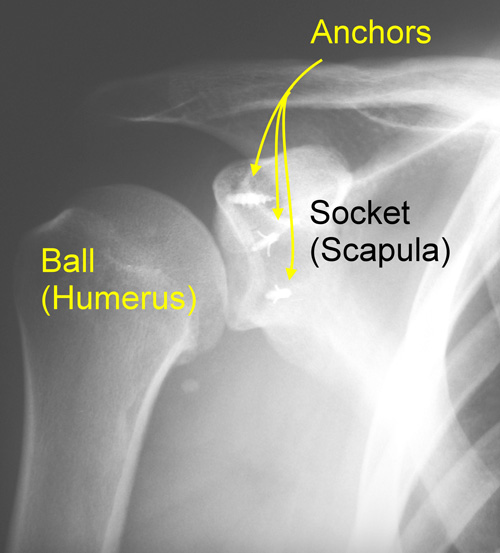
X-Ray of the shoulder showing anchors in the socket
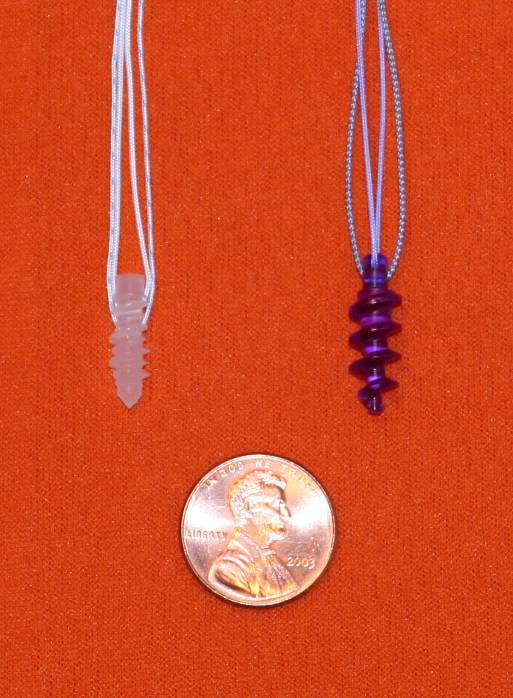
Examples of absorbable anchors with attached sutures (stitches) used to reattach torn tissue to bone
According to the Anesthesia Manual of Surgical Procedures, pain from shoulder stabilization surgery is rated at 6 out of 10 on a scale of 1 to 10, with 1 being no pain and 10 being the worst pain. Pain medication is given to control pain and keep patients comfortable after surgery. Pain predictably improves after surgery, especially after the first week.
What To Expect After Shoulder Stabilization.
Your doctor may prescribe a sling after surgery. If so, you will probably wake up from surgery with the sling on.
Recovery after shoulder stabilization surgery is gradual. Patients usually take one to two weeks off from work. Physical therapy will be required for a proper recovery, usually for several months. Activity restrictions will apply after surgery until appropriate rehabilitation goals have been achieved.

A typical post-operative sling
If you’re suffering from orthopedic pain, whether or not it’s caused by shoulder instability or shoulder dislocation, contact the doctors at Orlin & Cohen, the leading Long Island orthopedic practice. Immediate appointments are available: Schedule yours now.



